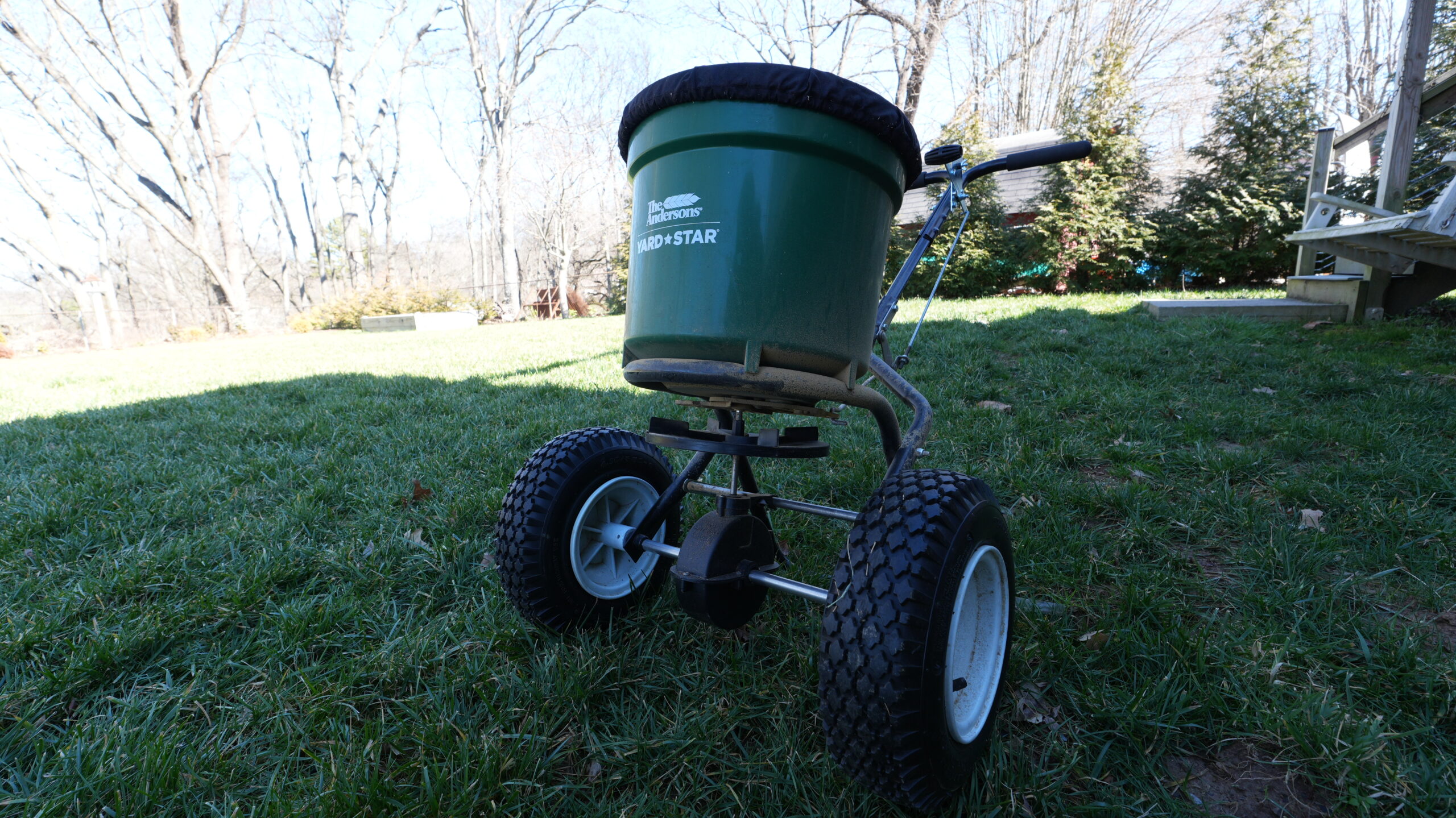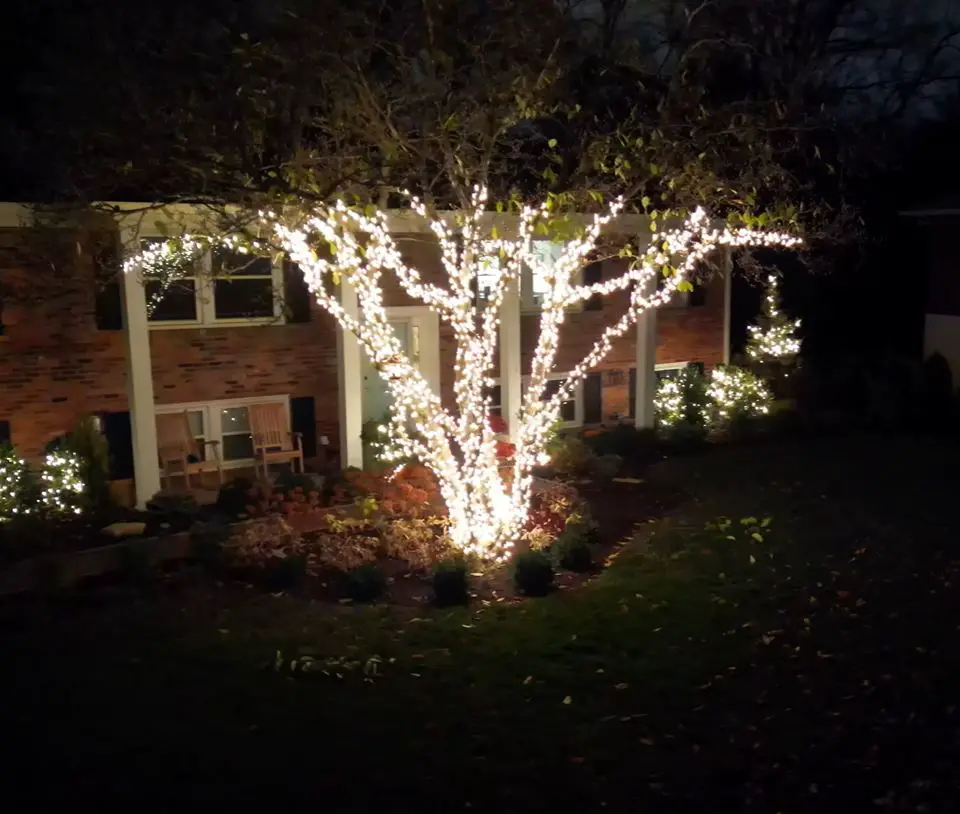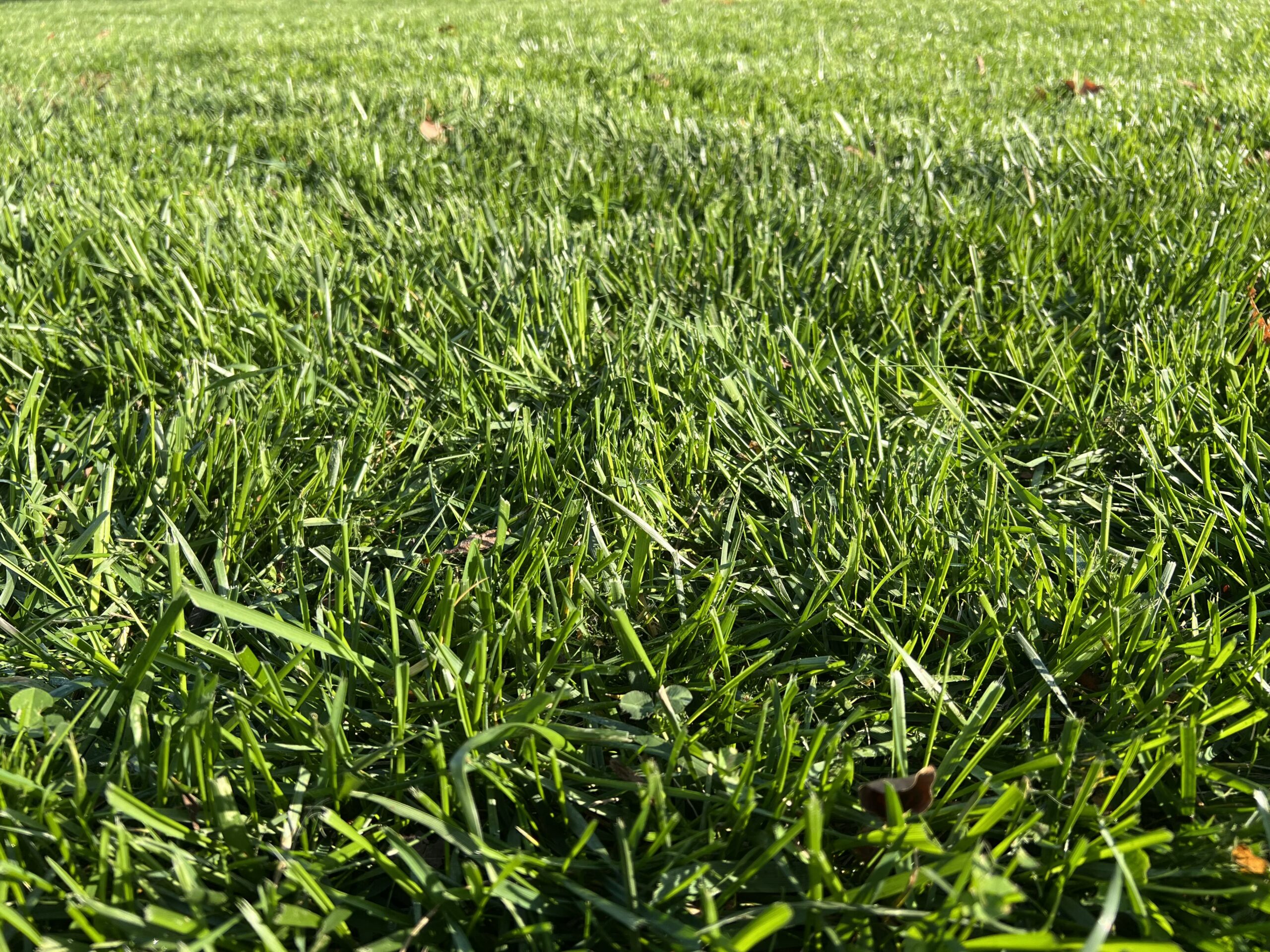Caring for a new sod lawn is an extremely nerve-wracking experience. Sod is expensive and looks great, but can easily fail.
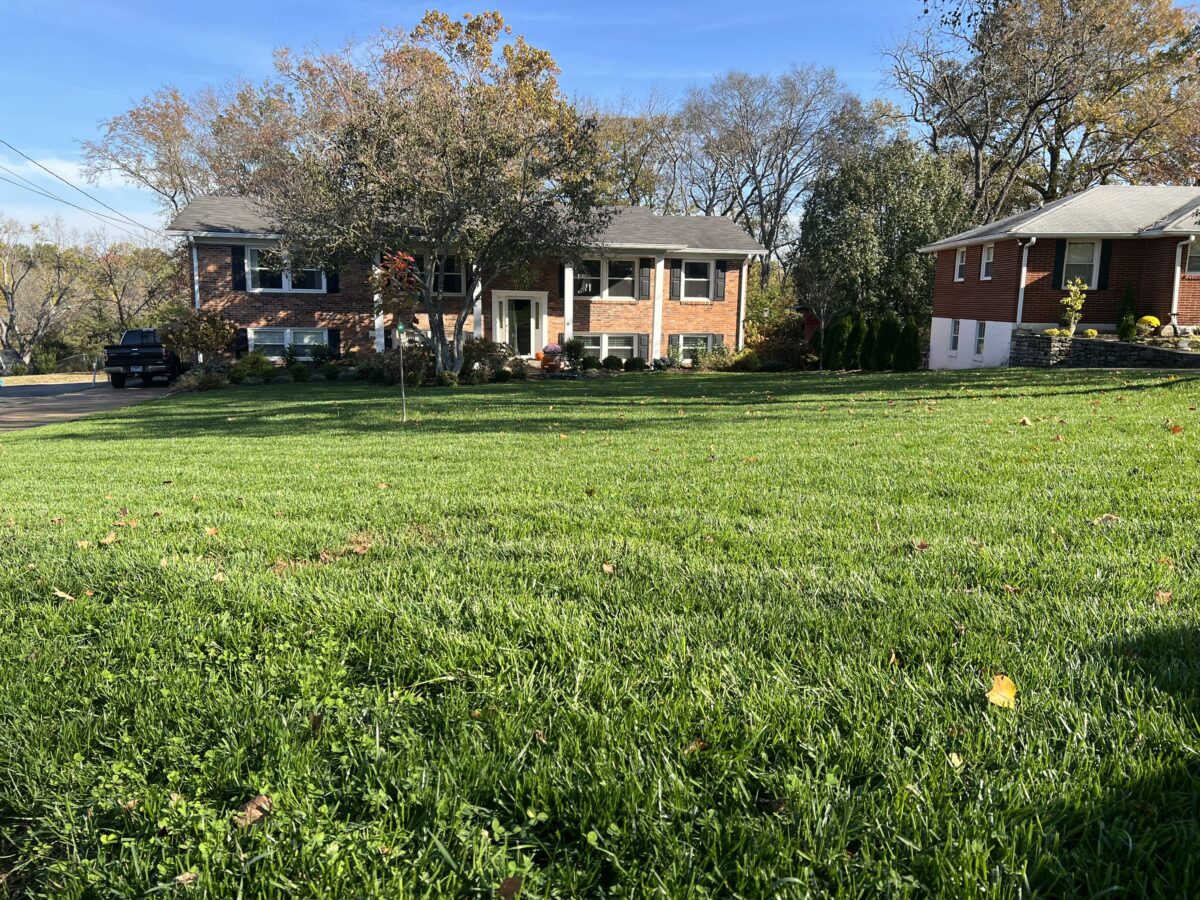
If the sod fails to grow and incorporate into the underlying soil, you are left with a huge mess.
My neighbor recently had to pull up his old sod lawn and it was an absolute nightmare. To add insult to the injury of losing his investment, he had to pull up all the old plastic mesh that was stuck in the dirt.
Yikes.
Let’s avoid that at all costs.
Today, we are going to talk through exactly how to take care of your new sod lawn to make sure it thrives for years to come.
Let’s get started:
The Basics: Why Sod Lawns Are Great
If you can successfully pull off a sod lawn transplantation, then they are by far the easiest way to get a nice looking lawn. Sod lawns are great because they immediately give you curb appeal with a luscious, green lawn.

Realistically, starting from scratch with just a plot of dirt and trying to grow thick grass is probably way harder than getting your sod to successfully stick. Starting from scratch involves tilling the dirt, leveling the lawn, watering, laying down fertilizer and seed, watering some more, and lots of prayer.
When the grass does start to come in, it’s usually sparse and patchy. Then you have to start the process mostly over again.
On the other hand, sod lawns instantly beautify your yard with thick, green grass. Work is still required to keep it there, but not nearly as much as a new lawn overhaul.
How To Prepare Your Lawn For Sod
Starting at the top, the first thing you want to do is to till up your yard. Yep, intentionally destroy that sucker. Using a tiller at about 2-3 inches will help pull up all the old, dead grass and weeds growing in your yard. It also has the benefit of bringing new soil up to the top, an extreme version of the yearly aeration process.
If you have grass and weeds pulled up from the yard that you just tilled, your next step is going to be to remove everything but dirt using a rake. So go grab a wide rake and a wheelbarrow and haul off all of that junk.

Once you have cleared out everything but dirt, you can use the same rake to make the lawn as level as possible. Some people use lawn levelers, but you can really get away with a rake and some elbow grease as long as you’re making the dirt relatively flat and even.
After you’ve got it level, you can lay down some lime and fertilizer. Most generic lime and fertilizers will be just fine to throw down without causing too much damage, but if you want to really skyrocket your chance of success then you can take a soil test. Soil tests will tell you the exact state of your soil which you can use to apply the perfect ratio of fertilizer.
If you’ve laid down the fertilizer, getting the soil nice and most with a sprinkler will help prime it to accept the roots from the sod. Make sure to do a nice sprinkle right before laying down the sod.
To summarize:
- Use a tiller to dig up weeds and grass from your yard.
- Remove everything except for the dirt using a rake.
- Level the lawn using the same rake or a lawn leveler.
- Lay down some lime and fertilizer.
- Keep the soil moist.
- Get ready to go.
How To Take Care of New Sod
It’s a great day! Your lawn looks picture perfect and the sod is completely down and ready to thrive, right? Right?
Not quite. While the sod looks perfect, it is going to take some work to keep it that way. It’s almost like getting flowers for your wife. They look great, but without water they are going to wilt quickly. It is way more complex to keep it not only alive and green, but truly healthy to survive year after year.
Watering Your New Sod Lawn
The first thing to do is to let these puppies drink. Give them water! Most folks recommend that you water twice per day for 20-30 minutes. I would go even a little bit less time, 10-20 minutes, but watering multiple times throughout the day, like 4-5 times.
We recommend watering for 10-20 minutes, 4-5 times per day. The difference is all about getting the roots to dig deep. In order to have roots that get deep, they can’t get rotten or diseased by being overwatered. Overwatering will result in fungus and deprive the roots of vital oxygen that they need in the first few weeks for survival.
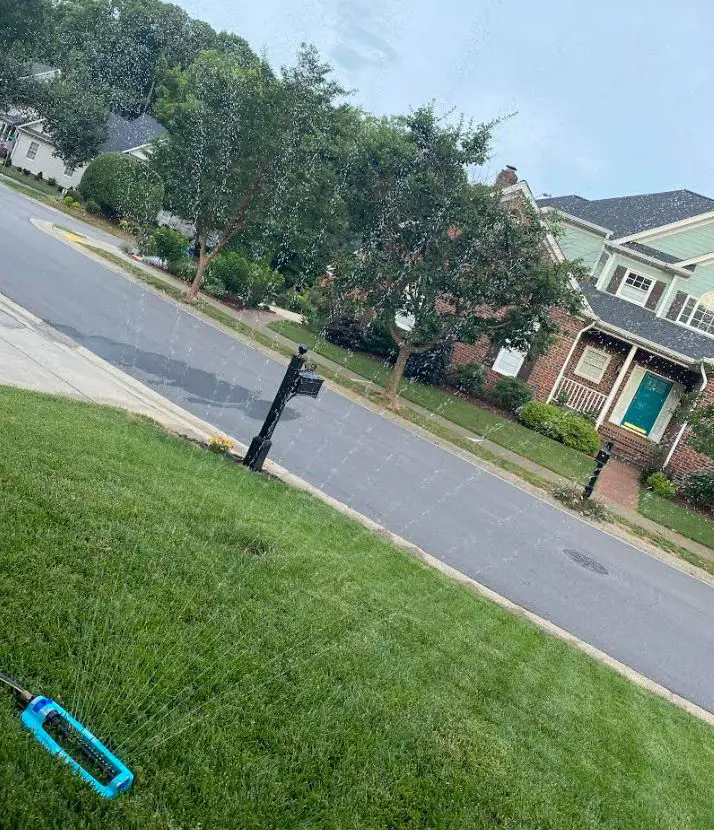
Our conventional recommendation for someone overseeding their lawn would be to water for 50 minutes, once a day. But that is advice for well established lawns with complex root systems. The longer, the better with those.
Also be sure to water every day for the first week, then slowly pull back the number of days you are watering each week. Still maintain the 10-20 minute watering time, but 5 days a week the second week, 4 days a week the third week and then finally 2-3 days a week by the fourth week.
Check out our ultimate sprinkler guide.
Should you fertilize new sod?
Once you’ve watered religiously for a month, you can put down some fertilizer. Most basic fertilizers will get the job done, but we are going to recommend a nice soil ratio of 18-24-12, which is notorious for developing deep roots. You can get this from anywhere, but we recommend Anderson’s fertilizer, which you can get from Amazon for a great price.
If this process looks and sounds familiar, it is very similar to the initial overseeding process done after your yearly aeration process. The principles are really the same. You want deep roots.

Know When To Mow New Sod
Honestly, don’t even think about mowing for the first few weeks. You’ll notice the grass looks good at first but will wilt a little bit. Putting violent spinning blades over the top of this delicate transplant will only make things worse.
Once the lawn has perked up a bit and you have watered religiously, then you are good to mow. This generally falls at the 3-4 week mark. If you want, mowing and fertilizing can happen back-to-back.

As you should basically always do, crank the height up on your mower all the way to the top – especially for the first few mows. Make sure when you do mow, that the grass is completely dry and there are no mushy areas. If you’ve patched parts of the sod lately, leave those alone with the mower.
Summarizing this:
- Water for 10-20 minutes, 5 times per day, progressively tapering a day off each week.
- Fertilize your lawn at around the four week mark with an 18-24-12 fertilizer ratio.
- Mow at the 3-4 week mark.
- Try to stay off of the grass during this time.
I also recommend not to use an edger during this time. Let the roots totally sink in around the border of the grass, even if it starts to look messy. Once you have full confidence that the roots are deep, then you can start to beautify.
Remember, the health of your lawn is always more important than the appearance of your lawn. Just like with teeth. Don’t let it get to your head.
How Long Will It Take For The Sod To Root?
Typically 2-3 weeks is when you can feel confident that your sod has taken root. During cooler months, you can expect 4-5 weeks for the roots to become established.
If you try to rush the process you can put the whole yard at risk. Roots will begin to start digging after about a week, but are extremely delicate until the 2-3 week mark.
Why Is My New Sod Turning Brown?
New sod turns brown when it lacks water. Proper watering, 4-5 times per day for 10-20 minutes will help recover the sod.
If you see ALL of the sod turning brown, it is likely a water issue. If you are seeing brown spots, it could be any number of things including dog urine, fungus, or overwatering, although all of these are less likely to occur than all of your sod turning brown from dehydration.
How Long Should You Stay Off New Sod?
Try to keep animals, children, and yourself off of the new sod lawn for at least 3-4 weeks. This is a critical time period to make sure that the roots become established.
Why we started this site
We started The Lawn Review out of frustration. We couldn’t find clarity around what type of products were actually good and reliable. All the fertilizers we tried didn’t work. We ended up with a dying lawn, wasted time, and wasted money.
So we started buying and reviewing lawn tools and figuring out which ones were the best. And now we’ve moved onto actually keeping that grass nice and healthy all year around.
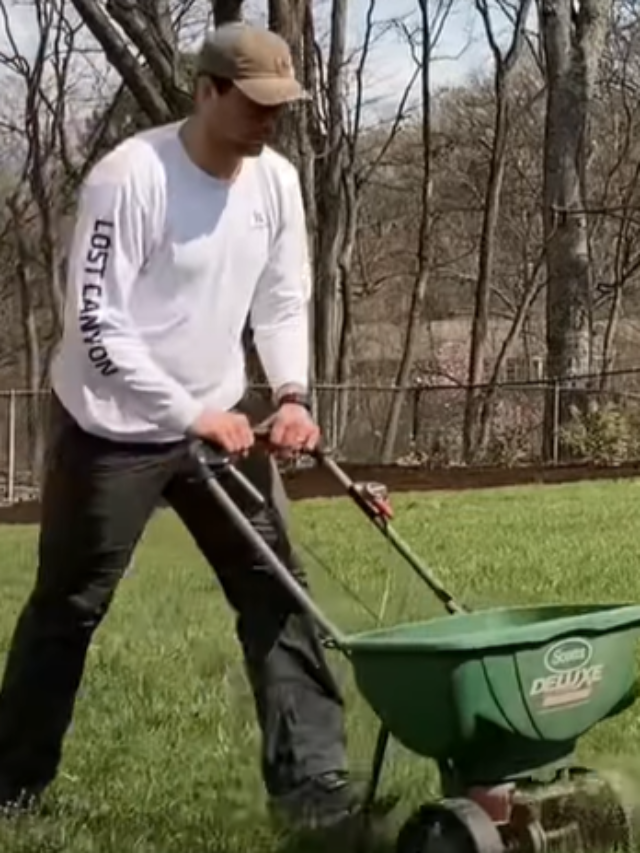
We’ve spent thousands of hours building this content for people just like you and me – normal people.

